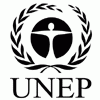Community / Land projects / Building human well-being and resilience in Amazonian forests by enhancing the value of biodiversity for food
Building human well-being and resilience in Amazonian forests by enhancing the value of biodiversity for food

€38595669.28
06/21 - 06/21
Completed
This project is part of
Implementing Organisations
Donors
Data Providers
Objectives
To advance the conservation of healthy and functional forests and wetlands resilient to climate change, maintaining carbon stocks, preventing GHG emissions, and generating sustainable and resilient local livelihoods[1]. [1] The Project will deploy field interventions in and around protected areas (PA) and indigenous territories (IT); supported by regional, national and international actions. All interventions will adopt adaptive, gender, and intercultural approaches, and respond to Peru’s NDC for climate change mitigation and adaptation.
Other
Note: Disbursement data provided is cumulative and covers disbursement made by the project Agency.
Target Groups
212. Section 1.7 details the benefits in terms of environmental, economic and social sustainability. The benefits can also be organized in a geographic scale, with positive socio-economic impacts at local, regional and national levels, and in other Amazon areas.213. On a local level, bio-businesses and public private partnerships will be consolidated, green jobs will be created, and income will be increased and diversified. Enhancing productive and management capacities to coordinate development and value chains of eco/bio-businesses, as well as to manage land and resources more sustainably (including protected areas delivering ecosystem services), will contribute to improve sustainability of livelihoods of men and women, mainly indigenous, who depend on the forest and aquatic ecosystems within the scope of the Project. By increasing the range of options for sustainability in terms of the variety of resources used and the recovery of degraded ecosystems, and by contributing to enhancing income per managed surface area, the Project will contribute to food safety and will strengthen capacities for climate change adaptation.214. At a national level, and in other areas in the Amazon, the Project will boost learnings and improve the instruments and capacities of decision-makers and other actors to manage land and biodiversity in order to replicate sustainable biodiversity management models and financial mechanisms for conservation of ecosystem services in other Amazon landscapes; in turn, yielding benefits for local populations.215. These national- and local-level benefits are associated with the protection and better management of protected areas and high conservation value areas, land restoration, reduction of GHG emissions, and integrated water resource management, which will translate into the reduction of the effects of climate change on vulnerable populations, the reduction of deforestation and land degradation, the reduction of species extinction and of the flow of ecosystem services, as well as the reduction of hazards to freshwater resources.216. In the Amazon basin, the Project will strengthen the cooperation for the assessment and conservation of biodiversity and effective governance in the use of natural resources. It will also contribute to achieving the goals of national and international agreements destined to guarantee healthy and functional ecosystems. The Project will protect and restore one of the most important sources of biodiversity and climate change mitigation in the planet, bringing about economic, social and environmental benefits at all levels.




